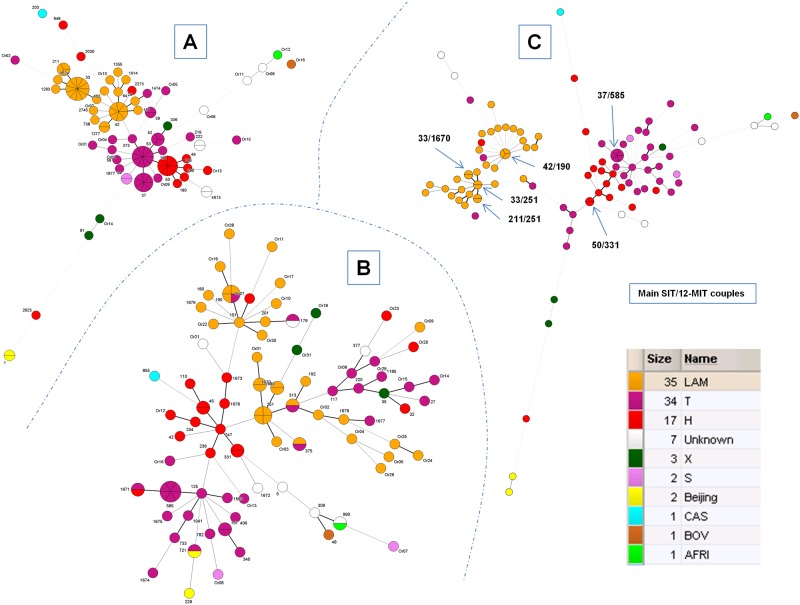Fig 1. A minimum spanning tree (MST) illustrating evolutionary relationships between spoligotypes and 12-loci MIRU-VNTRs in Santiago, Chile (n = 103 isolates).
(A) MST constructed on all spoligotypes; (B) MST constructed on all 12-loci MIRUs alone; and (C) MST constructed on the combination of spoligotypes and 12-loci MIRUs. The phylogenetic tree connects each genotype based on degree of changes required to go from one allele to another. The structure of the tree is represented by branches (continuous vs. dashed and dotted lines) and circles representing each individual pattern. Note that the length of the branches represents the distance between patterns while the complexity of the lines (continuous, gray dashed and gray dotted) denotes the number of allele/spacer changes between two patterns: solid lines, 1 or 2 or 3 changes (thicker ones indicate a single change, while the thinner ones indicate 2 or 3 changes); gray dashed lines represent 4 changes; and gray dotted lines represent 5 or more changes. The size of the circle is proportional to the total number of isolates in our study, illustrating unique isolates (smaller nodes) versus clustered isolates (bigger nodes). The separation inside circle also indicates the number of strains. The color of the circles indicates the phylogenetic lineage to which the specific pattern belongs. The labels of nodes indicate SITs and 12-MITs respectively in Fig. A and B; and main SIT/12-MIT couples (n ≥ 2 isolates) are represented in Fig. C.

